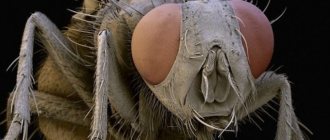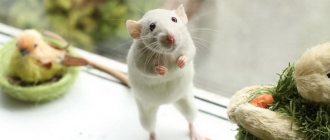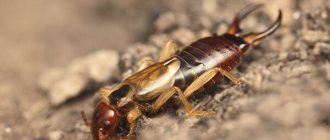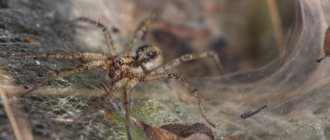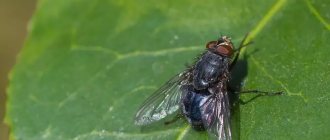Queen bee:
Its color can be dark or black depending on where it lives, it also has a huge stinger, which it only uses against other queens, and a very developed jaw gland. The body weight of an adult varies from 180 to 300 mg. It should perform only one function, lay eggs; it can lay from 1,500 to 3,500 thousand eggs per day.
You can listen and download the sound of a bee by clicking on the link.
Differences between domestic and wild bees
Domesticated and wild bees are similar in the following ways: the queen dominates the family and lays eggs, and the workers are the basis. The workers perform the same tasks - cleaning the hive, collecting honey, caring for the queen, raising brood and building honeycombs.
Differences between wild insects:
- smaller size,
- inconspicuous coloring,
- thicker cover to protect from the cold,
- strong immunity,
- aggressiveness,
- constant activity,
- increased performance.
Bees living in natural conditions are now on the verge of extinction. Therefore, insects are listed in the Red Book. Wild animals are an important component of the planet's ecosystem.
Working honey bee:
The eyes are large in shape, the facets on them are tube-shaped, consisting of several hundred, and between them there are 3 even eyes. There are burrs on its sting, which, when bitten, cling to the skin and the sting remains in the body, after which it immediately dies.
They have wings (two pairs) of membranous wings connected and attached by a thin thread. There are brushes on the inside of the legs, with which she shakes off the collected pollen from the flower organs and places it in the basket. The pollen container is equipped with a flat bottom; two or three strong hairs grow on its edge, which hold the nectar that carries it into the hive.
Also on the womb are glands that mint wax. It dries out and turns into sensitive waxy plates, which are then used by bees to build honeycombs.
Description and characteristics of bees
Bees stand out among other insects by their bright, recognizable appearance and the characteristic structure of individual body parts.
Appearance
Bee families include more than 520 genera . As for the number of species, about 20 thousand are known. Almost all varieties are very similar to each other.
Queens, males and worker bees also visually look the same, but differences are still hidden in minor details. The queen is the easiest to identify: she is almost twice as large as the workers. The most noticeable thing is its thick abdomen, in which the developed genitals are located. Workers are also female, but they do not have developed ovaries. Drones are males and are distinguished by bulging eyes, a large abdomen and a large head. In addition, males lack a stinger.
The body is covered on the outside with hair, which acts as sensory organs, protects the body from pollution, helps transport pollen, and also provides warmth in the winter months.
The coloring of this insect is well known; it consists of a black background with yellow markings. But the size can vary from 3 to 45 mm according to the species and family.
Did you know? The distance from the Earth to the Moon is equal to the distance that one bee flies during honey collection.
Structure
In the structure of the body of this insect, it is customary to conventionally distinguish the following parts:
- Head. It is equipped with a proboscis, which is a mouthpart. There are also two antennae and compound eyes with a faceted structure.
- The chest consists of four rings tightly connected to each other.
- Abdomen , containing the gastrointestinal, reproductive and stinging apparatus, as well as wax glands. Its lower part is covered from the outside with long villi that help retain pollen.
- Wings that are connected to one another by small hooks.
- Legs (paws) . They are covered with hairs, which also take part in collecting pollen.
Structure of a honey bee
Life and development of the honey bee
In the first ten days of spring, there can be more than 1000 bees in the hive, and closer to summer there are about 5000 - 7000 thousand of them. In a large and friendly family there live 2 types of females: the female and worker bees, and there are also males.
Each member of this family has his own responsibilities. The main female leaves one egg in each cell. After some time, females emerge from fertilized testicles, not from fertilized drones. After three or five days, they become larvae; within a week they molt 4 times and grow very actively.
Old bees wall up newborn offspring in cells with a wax cover. They first take the form of pupae and then of adult bees. When the time comes, she leaves the cell, but still needs the care of older bees, who continue to feed them for some time.
Young individuals begin to work almost immediately; their initial task is to clean the cells of debris. The older generation carries out its labor activities outside the hive. After 10 days, the wax glands of the young animals begin to reproduce scales, which are subsequently used in the construction of honeycombs.
From 16 to 22 days later, part of the young generation produces honey from pollen . 25 days after the young bee leaves the cell, it begins to fly out of its home and make its first cleaning flights in order to remember the location of its home, increasing the distances each time.
According to statistics, flying bees begin their full active activity at 16–21 days, sometimes even earlier. Flying out of their home, they try to collect more pollen and nectar, but that’s not all; they also gladly accept honeydew from the petals of rare trees.
Bee breeds
It's hard to believe, but there are currently more than 20,000 breeds of bees in the world. Honey-bearing workers can be found in almost every corner of the globe, with the exception of places covered with eternal ice. Due to the characteristics of the climate and natural landscape in different regions and countries, in the process of evolution, each breed of bee has developed individual behavioral characteristics and differences in appearance. That is, the bees adapted to the conditions of the external habitat, so the process of building honeycombs, the tendency to swarm, winter hardiness, work productivity and other characteristics can differ dramatically, and for the beekeeper the choice of the breed of bees with which to work is very important, since this will undoubtedly be reflected In general, the apiary is at work. In this article, we will, of course, not describe all the bee breeds found on Earth, but will focus on the characteristics of the bee breeds most often found in Russia and neighboring countries. In our apiary we work with carnica and buckfast, so we will describe these bee breeds first, and then the rest.
| Karnika or Krainka | |
One of the most popular breeds of bees in apiaries in our country and in Ukraine. Distinctive features of this breed of bees are:
Read more about Karnika bees here. | |
| Buckfast or buckfast bees | |
A hybrid breed of bees, bred in England through long-term selection, as a result combining the best qualities of Italian (base), English, Greek, Egyptian, Macedonian and Anatolian bees from Turkey. This breed of bees was brought to our country relatively recently, but we already have very positive experience working with it. Although, unlike the hybrid line and the breeder, Buckfast bees may differ slightly from each other, the main characteristic features that are standard for this breed of bees can be called:
| |
| Central Russian bees | |
| Although Central Russian bees have a number of significant advantages over other bee breeds, before deciding to work with them it is worth considering that they do not tolerate sloppy, rough and inaccurate work of the beekeeper, and are also highly prone to swarming. Otherwise, a beekeeper who neglects this risks being subjected to an aggressive attack from honey workers. In general, the main advantages of this breed of bees can be considered:
You can learn more about the advantages and disadvantages of the Central Russian bee breed here. | |
| Gray mountain Caucasian bee | |
| The breed of gray mountain Caucasian bees, unlike the previously described Central Russian bees, although they are similar in appearance, having a dark gray color, are peaceful and not prone to swarming. In addition, as an advantage of this breed of bees, one can note their excellent performance, but they are more suitable for regions with a long, but not too intense honeybee. Disadvantages include their poor resistance to nosematosis and foulbrood diseases, as well as generally poor tolerance to long and cold winters. You can read more about the breed of gray mountain Caucasian bees in the following article. | |
| Ukrainian steppe breed of bees | |
| This breed of bees is related to the Central Russian bee, it is slightly different in appearance, the color of Ukrainian steppe bees is gray, possibly with three yellowish stripes. Representatives of this breed of bees have slightly longer wings, proboscis and legs, but the body and wax glands are smaller. Among the positive qualities of this breed of bees is their high productivity, winter hardiness, excellent egg production of queens up to 2-3 thousand eggs per day. The disadvantage of the Ukrainian steppe breed of bees is their tendency to swarm and, although not too pronounced, moderate aggression. More detailed information about the Ukrainian steppe breed of bees can be found here | |
| Far Eastern breed of bees | |
| Bees of this breed are the result of crossing Central Russian bees with Ukrainian ones. This breed of bees has perfectly adapted to the harsh conditions of the Far East of our country, is characterized by high winter hardiness and good resistance to foulbrood diseases. The Far Eastern breed of bees has adapted to the relatively short period of the main harvest and is characterized by increased productivity, actively using the main brown honey from the linden tree. The egg production of the queen bees of this breed of bees is high, approximately the same as that of its ancestors - 2000-2200 eggs per day. The disadvantages of the Far Eastern breed of bees can be considered moderate viciousness and a tendency to swarm. Read more about the Far Eastern breed of bees here. | |
| Kuban, North Caucasian or Caucasian broad-footed bees are representatives of the yellow Caucasian bee breed | |
| A distinctive feature of bees of this breed are three bright yellow stripes on the abdomen, as well as the size of the bees; they are smaller than bees of other breeds living in Russia. The advantage of this breed of bees is the high egg production of the queens, but at the same time, during the main bribe period, or vice versa, in the absolutely non-grafting period, Kuban bees sharply limit the cultivation of brood and can even throw away open brood. Bees of this breed have good productivity, but the main disadvantage is their extreme swarming and their inability to cope with cold weather, they are not winter-hardy, and are prone to nosematosis. You can read more about Kuban (North Caucasian or Caucasian broad-legged) bees here.. | |
| Italian breed of bees | |
| The main advantage of this breed of bees is the simply incredible egg production of the queen - up to 3000 per day, and as a result the rapid growth, development and strengthening of families by the beginning of the main harvest, but at the same time they manage to gain strength in areas with a late main harvest, since it is quite late begin their spring development. Bees of the Italian breed are peaceful and not prone to swarming, but their big and main disadvantage is low winter hardiness, that is, they tolerate cold and long winters extremely poorly, that is, bees of this breed are good for working in areas with a warmer climate.. Read more about the features Read the behavior and characteristics of the Italian breed of bees here. | |
| Carpathian breed of bees (Karpatka) | |
| This breed of bees is very similar in its characteristics and behavior to the Karnika or Krajina breed of bees; some researchers even consider them to be related bees. The main advantage of the Carpathian breed of bees or Karpatka is its high winter hardiness, the ability to tolerate cold, long winters, and are resistant to nosematosis and foulbrood diseases. Bees of this breed have also adapted to the conditions of a relatively short harvest time; they are characterized by good pyroproductivity during honey collection. Carpathians are not prone to swarming. In areas with a warm climate, carpathian bees behave peacefully, but when working with them in less favorable climatic conditions, the bees become more angry and polis the nests more strongly. You can read more about the Carpathian bee breed (Karpatka) here | |
Buy Kalinka hives from the manufacturer of wooden hives for bees in the Beekeeping store.
You can also purchase bee packages, foundation, frames for hives, honey extractors, beekeeping suits, smokers, chisels, and preparations. Related articles:
- Place for an apiary
- What to do if you are stung by a bee?
- Preparing bees for winter
- Beekeeper's calendar for July
- Philantes or bee wolves
Share with friends:
Protection from enemies
The honey bee has only one weapon against dozens of enemies; having stung cattle or humans, it immediately dies, since its stinging apparatus remains in the enemy’s body.
However, if a hornet or an ordinary wasp tries to attack it, having stung them, it can easily return its sting to its original place. Enemies often lie in wait for bees when they return to the hive with nectar or pollen. They catch them and take them to the nest to feed the larvae.
How to properly collect honey from wild bees
Wild honey is a healthy, ecological product. Characteristics: dark color, thick consistency, pronounced sweetish-spicy smell, bitter taste. Candied slowly. Collected once a year, at the end of summer, when the nectar is ripe, infused and has lost a significant part of its liquid.
Instructions for collecting honey:
- Calm insects with smoke using a fumigator.
- Open the side (the internal cavity of the tree trunk where the beehive is built).
- Smoke the specimens to the top of the house.
- Cut the honeycombs with a wide knife and place them in a batman (house).
You cannot collect all the honey; you should leave a food reserve before winter. It is forbidden to touch the part near the entrance, which is used to insulate the nest. It is necessary to cut the honeycombs carefully so as not to damage adjacent cells. From one side you get from 1 to 15 kg of honey.
Wild bees
Insect bees - living in the wild, try to build their hives at the entrance of caves, in tree hollows or under rocky ledges. On hot days they fly out of their home to prey:
- Nectar;
- Water;
- Pollen;
- Honeydew;
- Padi;
Also, these insects can build hives on tree branches, the minimum height is from 8 to 10 meters from the ground, these hives can often be found in dense forests:
- India;
- Africa;
- Panama;
- Indonesia;
- South America and other countries located closer to the equator;
How to catch wild bees
In some qualities, “free” individuals are superior to domestic families, so beekeepers want to catch insects for breeding. The main thing in this matter is to provide them with familiar housing. You need to find a tree and make a hollow or prepare logs. Three methods of catching:
- preparing traps for placement on a tree in a secluded and quiet place for the swarming period,
- smoking out residents from the nest, collecting honeycombs with brood to move to a new location,
- cutting out the hollow along with the tree is the most labor-intensive method.
A popular method is forest beekeeping (breeding bees in natural conditions). However, the method requires some experience. Taming consists of regular feeding and provision of fresh water. If the family is left in the hive to live, then mandatory insulation is carried out for the winter.
Interesting Facts
- Before a bee begins to leave the hive in search of nectar, it must reliably examine everything that is within its home. If, after the bee flies, you move the hive 2 or 3 meters away, it may get lost.
- The young queen bees are fed bee milk, and the remaining larvae are fed bee bread.
- When the time comes and the queen grows old, the bees prepare a new queen cell, where they breed young queens. The old queen leaves the hive and dies. The queen of the family who gnaws out of the cell the fastest becomes the queen of the family; the rest of the queens are killed by the bees.
- If the bees find a rich source of pollen, then upon arrival at the hive they inform their relatives about the find using characteristic movements reminiscent of a bee dance.
Where and how do bees live
The geographic zone of residence of the insect in question is incredibly wide. These creatures are absent only in areas where there are no flowering plants. The swarm settles in any place protected from the wind where there is a body of water nearby - for example, these can be small mountain crevices, earthen holes, hollows of old trees. These creatures can be found in the attic of a house or between its walls.
Being highly organized social creatures, they live in large communities (hives), where a strict hierarchy and division of responsibilities is organized. The queen plays the leading role in the bee family: she is the one who creates the hive and is responsible for the reproduction of offspring. Males are necessary exclusively for fertilizing the uterus. All economic functions lie with the working individuals; they are the ones who are involved in its arrangement, collecting nectar, transferring honey, protecting the hive (if necessary), and so on.
Did you know? Bees do not empty their intestines at all during the winter.
Adult insects and larvae prefer to feast on pollen and sap secreted by flowering plants. In an effort to get food, they can move up to 10 km from the hive. Their mouthparts allow them to collect sugary plant sap and process it into honey. Mixing honey with pollen produces food for the larvae.


